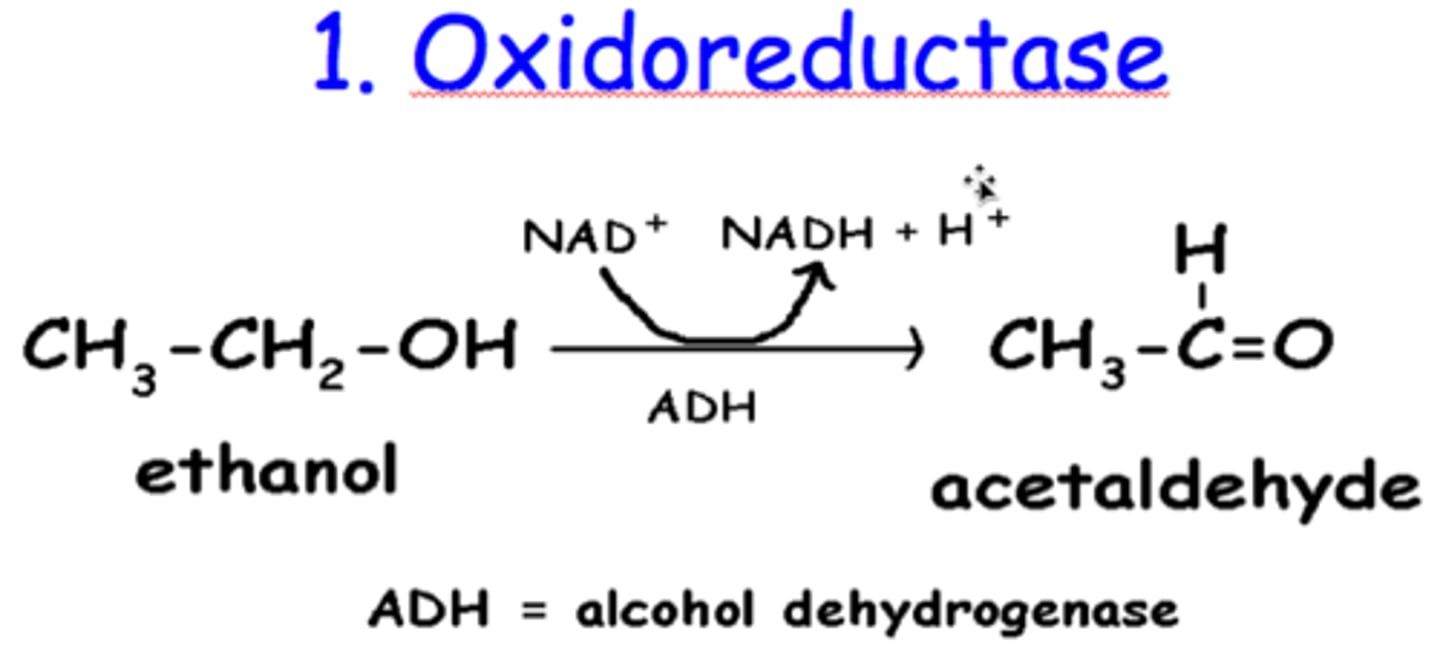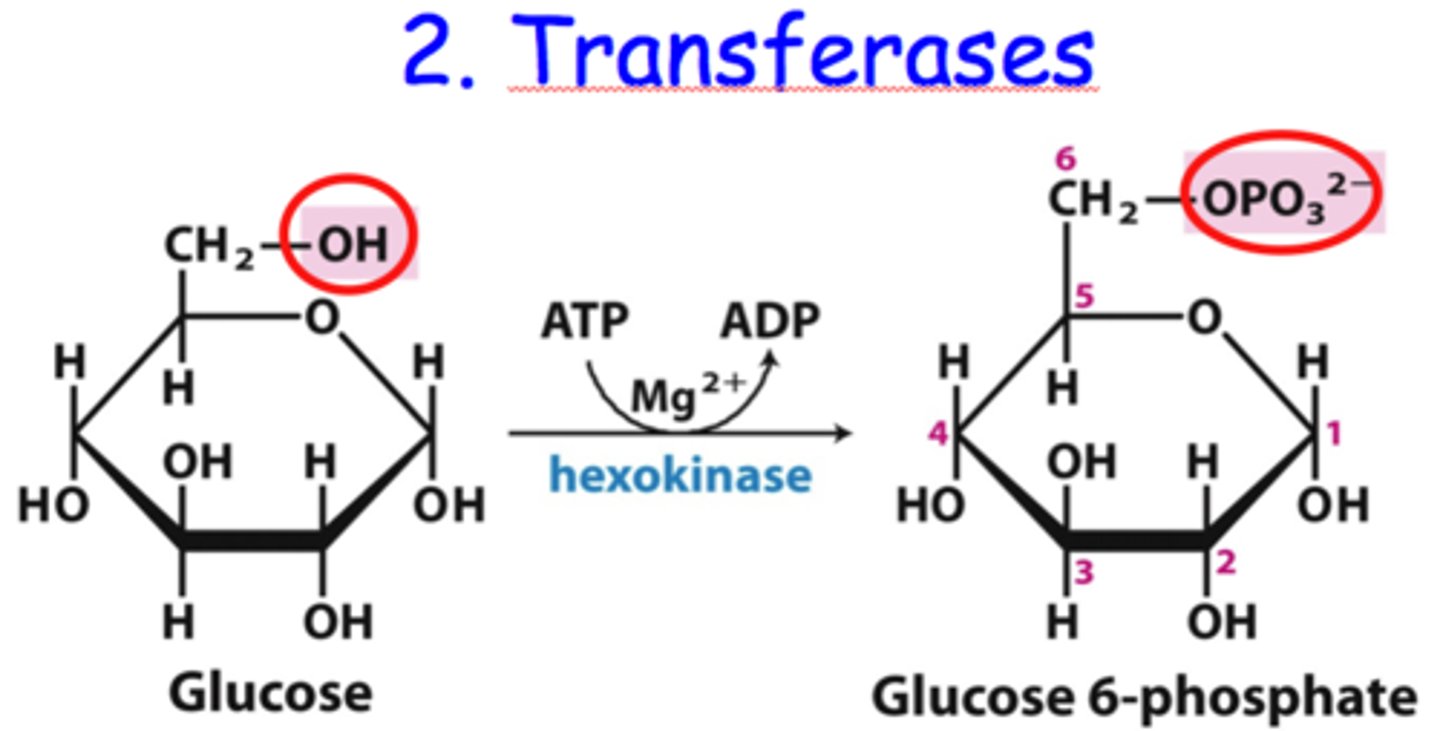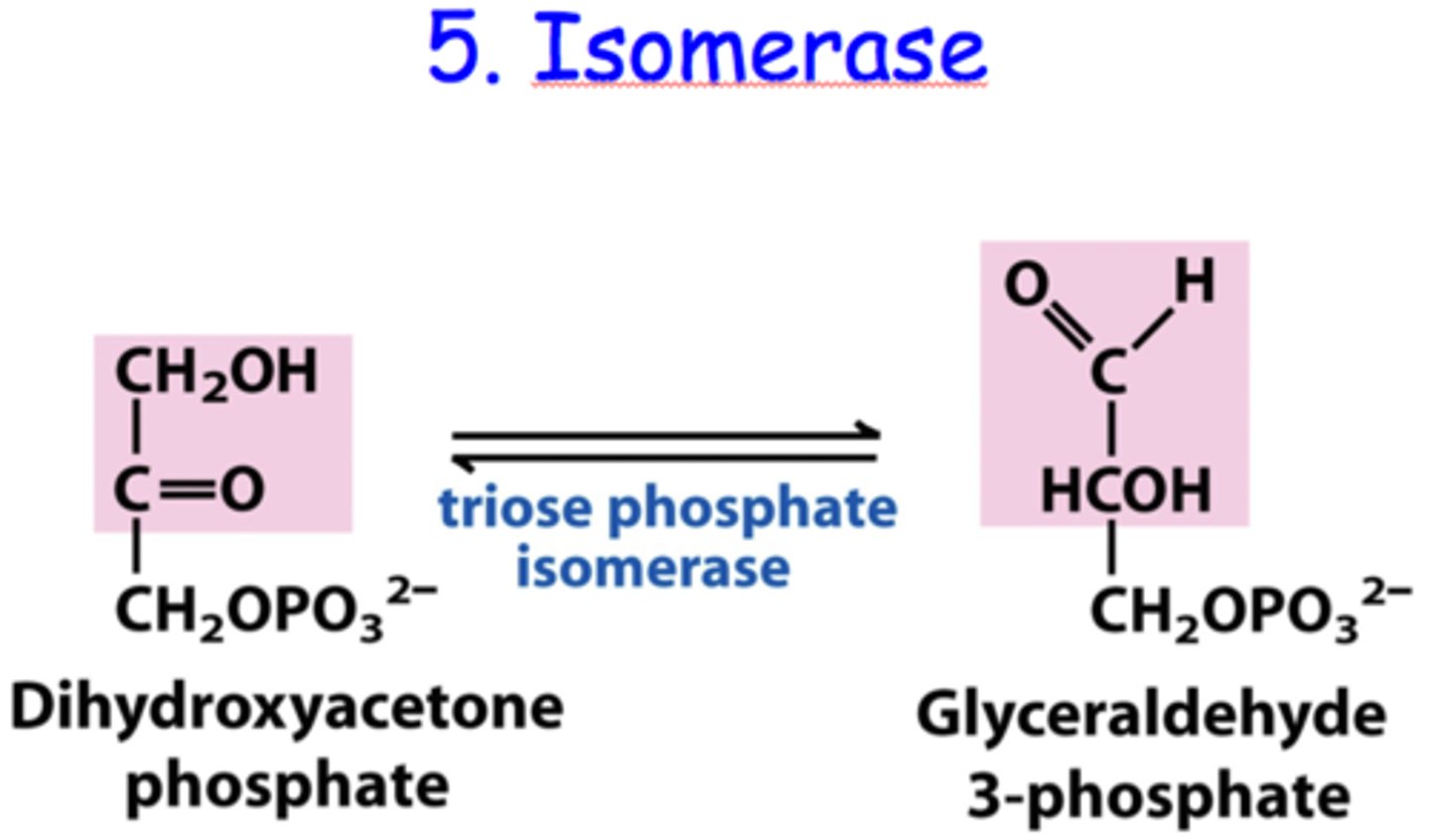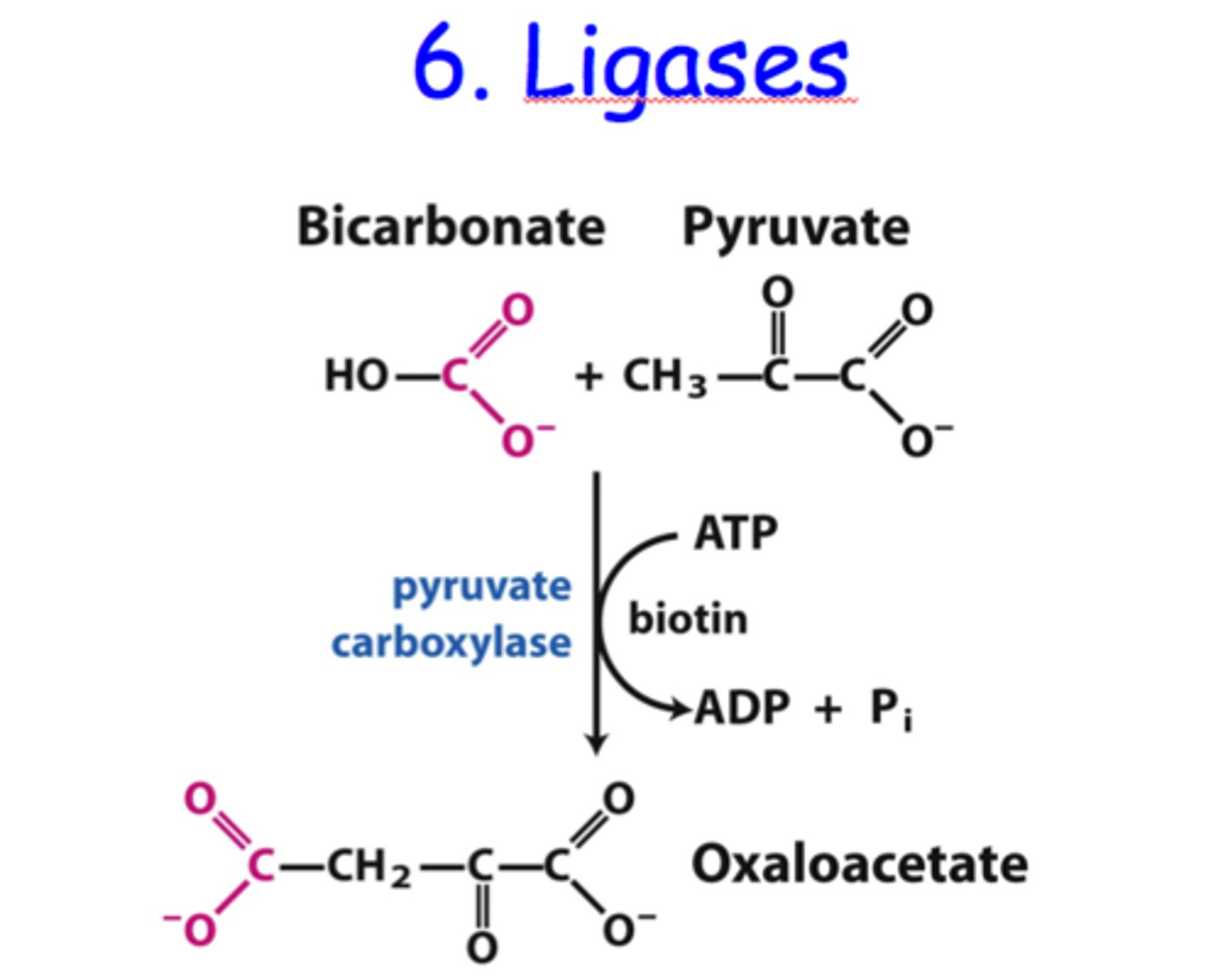BBE 4302 midterm 4
1/86
There's no tags or description
Looks like no tags are added yet.
Name | Mastery | Learn | Test | Matching | Spaced |
|---|
No study sessions yet.
87 Terms
what is an enzyme
macromolecular biological catalysts that accelerate chemical reactions.
positive characteristics of enzymes
1. highly selective in what they react with
2. generally non-toxic
3. often do not produce by-products
EC tree of enzymes
3 Hydrolases
3.2 Glycosylases
3.2.1 Glycosidases, i.e. enzymes that hydrolyse O- and S-glycosyl compounds
3.2.1.91 cellulose 1,4-beta-cellobiosidase (non-reducing end)
EC 1, Oxidoreductases:
catalyze oxidation/reduction reactions
can break down C-C bonds
A- + B → A + B-, usually uses NADP+ or NAD+ as cofactors.

EC 2, Transferases
transfer a functional group (e.g. a methyl or phosphate group)
A-c + B → A + B-c,

EC 3, Hydrolases
catalyze the hydrolysis of various bonds
A-B + H2O → A-OH + B-H

EC 4, Lyases
cleave various bonds by means other than hydrolysis and oxidation
A-B → A + B

EC 5, Isomerases:
catalyze isomerization changes within a single molecule
A-B → B-A
facilitates rearrangments

EC 6, Ligases:
join two molecules with covalent bonds.
Ab + C → A-C + b, e.g. DNA ligase

enzyme structure
50-2,500 amino acids; several to tens of nm;
"Protein size ≈ aa number X 0.11 kDa"
Catalytic/Active domain: binding site and catalytic site
Special binding domain, e.g., CBM (cellulose-binding module)
Linker, maintains the precise orientation and dynamics of the active domain
Cofactor binding domain
which is easier to degrade? starch or cellulose & why?
starch
-components are the same but structures are different
-cellulose = crystallized, more complicated, accessibility is decreased,
cellulose
beta 1,4
starch
alpha 1,6
fermentation
glucose metabolized directly
by Saccharomyces (yeast)
Starch Degradation:
Starch is broken down into simpler sugars like glucose through enzymatic hydrolysis. Amylase enzymes catalyze the hydrolysis of starch.
Glucose isomerase (glucose fructose)

lignocellulose degradation
ligninases(mostly oxidative)
Lignin peroxidase - most prevalent = breaks lignin bonds
Manganese peroxidase - breaks lignin molecule
Versatile peroxidase - breaks lignin molecule, but unclear role.
Laccase - breaks lignin molecule....also builds it...unclear role
Cellulases
produced by major decomposers of cellulose such as fungi and bacteria
must break bonds between β-linked glucose, but
must ALSO penetrate crystalline regions
SYNERGISTIC MIXTURES ARE USED
Hydrolytic enzymes - insert water molecule to break bond
Hemicellulases
degrade hemicellulose which is a complex mixture of polysaccharide polymers
(Hemicellulose = xylan, mannan, galactan)
Endoglucanase
Enzyme responsible for the breakdown of cellulose in fungi and bacteria
cleaves randomly in the middle of polymer chains.
Amorphous cellulose attack, with minor crystalline attack.
Exoglucanase
produces glucose from cellulose
cleaves glucose dimer (cellobiose) from one end
of polymer chain. Crystalline cellulose attack.
ENDO-EXO Synergy
Free ends' created for exo by endo
Crystalline regions 'opened' to endo by exo
What are the two primary enzymes for breaking down starch?
α-amylase and amyloglucsidase
How do α-amylase and amyloglucsidase relate to corn-based ethanol production?
They are crucial in the production process. α-Amylase breaks down starch into smaller polysaccharides, and glucoamylase further hydrolyzes these into glucose for fermentation to ethanol by yeast.
Beta-Glucosidase
converts cellobiose to glucose
three princpal enzymes to break down cellulose
cellulases - are hydrolytic enzymes (insert water molecule to break bond)
*Endoglucananse
*Exoglucanase
*Cellobiohydrolase(CBH I)
which microbe we can use to produce commercial cellulases
Trichoderma reesei
why we must apply pretreatment for lignocellulose conversion
Pretreatment to facilitate Trichoderma enzyme access
is necessary.
majescellulose accessible to enzymes
Are these enzyme-producer microbes good lignocellulose degraders in nature?
Trichoderma is not good in nature at lignocellulose
degradation. It works best on pure cellulose.
ENZYME IMPROVEMENT - traditional mutagenesis
by UV, r-irradiation, linear accelerator, dES (diethyl sulfate), NTG (N-methyl-N0-nitro-N-nitrosoguanidine), etc
Improve cellulase performance, but the genetic background is unknown;
Use comparative genomics to understand the changes relative to WT..
ENZYME IMPROVEMENT - Genetic modification
of the enzyme synthesizing pathways;
ENZYME IMPROVEMENT - Rational design or Directed evolution to
Improve enzyme properties.
ENZYME IMPROVEMENT - optimization of
fermentation conditons
Understand why lignocellulose is one of the great ways to obtain energy - environmentally friendly and sustainable.
-Renewable: each 10-1000 years
-Cause less C emission;
-Provide sustainable carbon sources.
LARGE ABUNDANCE
What is the first goal of a suitable biomass 'feedstock'?
Fast Growth - Example: Monterey Pine - Pinus radiata
What is the second goal of a suitable biomass 'feedstock'?
Quality Raw Material - Example: Eucalyptus, long uniform fibers for papermaking
What is the third goal of a suitable biomass 'feedstock' in terms of maintenance?
Low Maintenance Requirements - Example: Switchgrass,Requires very little fertilizer, Drought-tolerant, Pest-resistant, Excellent on 'degraded' soils
What is the fourth goal of a suitable biomass 'feedstock' in terms of environmental impact?
Environmentally-friendly - Example: Mixed Native Prairie-grasses
What is the fifth goal of a suitable biomass 'feedstock' in terms of 'digestibility'?
High 'Digestibility' - Example: Hybrid Poplar
Why has lower-lignin-content plant engineering been explored for 'digestibility,' and why have they had survival problems?
Lowering lignin content in plants improves their digestibility and enhances biomass conversion efficiency.
Plants engineered for lower lignin content have faced survival problems due to compromised structural integrity, susceptibility to pests, and decreased resistance to environmental stressors.
FEEDSTOCK TYPE - Corn stover
(stalk + leaves...no cob!) - Easy transition for near-term cellulosic fuels
FEEDSTOCK TYPE - swithgrass
energy crop Big in the southeast...comes from midwest
FEEDSTOCK TYPE - other
wheat straw
sugar cane
poplar/aspen
municipal waste
Fractionation
separating (refining) the
individual components of
lignocellulose for utilization
biorefinery
a facility that integrates biomass conversion processes and equipment to produce fuels, power, and value-added chemicals from biomass
marketable component of cellulose
a1 - Fiber for paper (longer fibers = better paper)
a2 - Fiber for textiles
a3 - Fiber for strengthening materials (Nanofibers)(Can be used for an absorbent)
a4 - alcohols
marketable component of hemicellulose
b1 - alcohols
b2 - Solvent for fibers during pulping (papermaking)
b3 - Industrially-important chemicals (ex. Furfural)
marketable component of lignin
c1 - Burned for energy
c2 - Thermoplastics, foams, and other materials
c3 - Lignin valorization for producing value-added products (transform into different carbon forms)
marketable component of extractives
d1 - Industrial chemicals (tannins, terpenoids, resin)
d2 - Sap for Latex
marketable component of bark
e1 - cork
e2 - mulch
e3 - charcoal or energy
Goals for Biodegradative Organisms/Systems:
1 - Fast Acting
2 - Highly Selective and Efficient
3 - Robust
4 - Low Cost
5 - Compatible with other Degradative Systems
6 - Multifunctional
Three ways to 'harness' an organism of interest.
Direct Utilization
-Utilization of Native Organism (includes using purified enzymes)
-yeast, sugar to ethanol
Bioengineering
-Take the organism, and change it genetically to make the organisms express the traits you want
Biomimicry
-Use the pathways or systems of an organism as a blueprint to follow during engineering your own system
what are extremphiles & why do we want them for bioenergy
Extremophiles are microorganisms capable of thriving in extreme environments such as high temperatures, acidic pH, or high salinity.
They are of interest in the bioprocessing industry for their potential to perform under harsh conditions and produce valuable enzymes or metabolites.
One-Pot Processes
Integrated bioprocessing systems where multiple steps (e.g., pretreatment, hydrolysis, fermentation) occur in a single reactor or vessel, reducing processing time and cost.
Consortia Bioprocessing
Cooperative interactions between different microorganisms in a bioprocessing system, enhancing overall efficiency and productiv
Bioprospecting
Surveying biological organisms in general for potential utilization (Traditionally referred to surveying plants for medicinal applications)
Bioprocessing Steps for Lignocellulose to Biofuels:
Biomass Collection and Delivery.
Pretreatment to remove lignin and enhance accessibility.
Hydrolysis to break down polysaccharides into fermentable sugars.
Fermentation of sugars to produce biofuels (e.g., ethanol).
Biofuel Processing for purification and quality control.
corn ethanol
Alcohol fermentation in yeast cells.
Anaerobic process - 3 general steps
Amylase catalyze the starch degradation to produce glucose.
Advantages of Cellulosic Ethanol
Utilizes non-food feedstocks, reducing competition with food production.
Greater potential for sustainability and environmental benefits.
Diverse biomass sources available, increasing flexibility and scalability of production
Environmental Remediation
detoxification or removal of contaminants/pollutants from an environmental medium (soil, groundwater, etc.)
steps in environmental remediation
1. excavation
2. "ex situ"
2a. pump & treat
3. in situ - detoxificastion
4. vapor extraction
Environmental Remediation Approaches
1) Incineration - high temp combustion = gases, particulates,
ash, heat (most expensive)
2) Thermal desorption - moderate temp volatilization
= off-gas (produced, then treated)
3) Solidification/stabilization - immobilization via
precipitation, complexation, etc. (example, Bentonite)
bioremediation
The use of living organisms to detoxify and restore polluted and degraded ecosystems
Phytoremediation
A method employed to clean up a hazardous waste site that uses plants to absorb and accumulate toxic materials
What is the process involved in PFAS remediation via sequestration and immobilization?
Soil amendment with a sorbent like activated carbon or biochar
What is the function of the sorbent in PFAS remediation?
Binding PFAS and immobilizing it in the environment to reduce escape to groundwater or leachate
What are the advantages of PFAS remediation via sequestration and immobilization?
Readily available commercial sorbents, applicable to various soil types, in-situ or ex-situ treatment, cost-effective
What are the limitations of PFAS remediation via sequestration and immobilization?
Long-term stability of binding is uncertain, does not destroy PFAS, amount of sorbent needed may impact land use management
What is soil washing?
Process: Soil is washed with or without a solvent to transfer contaminants from soil to wash solution.
What are the advantages of soil washing?
Compared to destructive technologies, soil washing has lower infrastructure requirements and can recover treated soils.
What are the limitations of soil washing?
Not applicable to all soil types (e.g., clay-heavy soils), requires excavation of soils making in-situ treatments problematic, and produces contaminated liquid that requires extensive treatment.
What is the process of separation in soil liquefaction?
Soil is mixed with liquid to form a slurry which is fractionated producing a foam. PFAS readily transitions to the air-water interface.
What is the function of PFAS in soil liquefaction?
PFAS readily transitions to the air-water interface (foam) which can then be removed.
What are the advantages of soil liquefaction separation?
Potentially an in-situ treatment, high removal efficiency.
What are the limitations of soil liquefaction separation?
Not applicable to all soil types e.g. clay, high cost, requires secondary treatment of foam fraction.
What is the process of Destruction - Chemical Oxidation?
Pump chemical oxidant (H2O2, persulfate) into soil followed by optional downstream extraction
What is the function of Chemical Oxidation in Destruction?
Oxidant oxidizes PFAS to CO2 or more readily degradable substances
What are the advantages of Chemical Oxidation in Destruction?
Converts PFAS to more biodegradable substrates or directly destroys PFAS
What are the limitations of Chemical Oxidation in Destruction?
Requires large volumes of oxidants, additional safety measures if drinking water could be impacted, inefficient oxidation of many PFAS, requires highly permeable soil, interference from carbonate and organic substances
What is the thermal destruction process for PFAS compounds?
Soil is excavated and treated with high temperatures (>500°C)
What are the advantages of thermal destruction for PFAS compounds?
High degradation rates (>90%), treats a variety of PFAS, potential value-added products like biochar or syngas
What are the limitations of thermal destruction for PFAS compounds?
High disruption of environment, destroys the soil, expensive, production and emission of HF and partially fluorinated compounds, volatilized PFAS
Mycoremediation
using fungi to remove or degrade dangerous chemicals
Why microbes? bioremediation
They are heartless and gutless
They are riddled with mutants
They go to extremes
They are more prolific than "rabbits"
They may already be working for you
Xenobiotic
synthetic, not found in nature
How do we apply the biodegradation process for remediation?
a. Passive in-situ (Natural attenuation)
b. Promoted in-situ
c. Inoculation
d. Ex-situ treatment (solid and slurry)
e. Engineered systems treatment
Hydrophobin
Can enlarge the fungal area of the cells - help elongation & break down surface tension
why fungi are good for biomediation
robust
surface area
hydrophobic
hydrophoobin